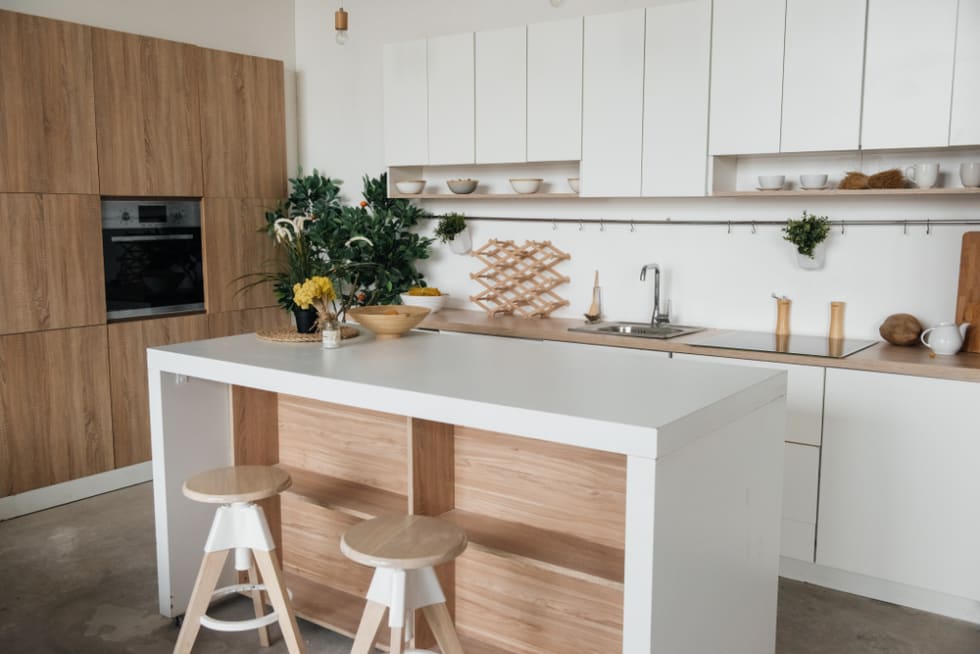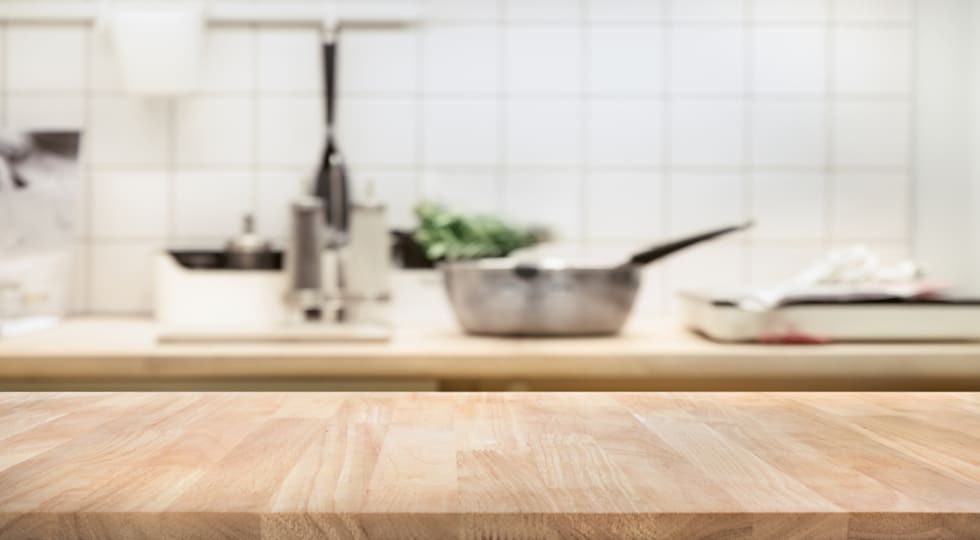The Pembroke
- 115 units available
- 1 bed • 2 bed
- Amenities
In unit laundry, Granite counters, Hardwood floors, Dishwasher, Pet friendly, 24hr maintenance + more

A kitchen on an island might be the best solution for you if you feel like you lack counter space in your cooking area. But, what exactly is a kitchen island?
Simply put, a kitchen island is a standalone countertop area that is completely detached from the rest of your kitchen counters and cabinetry. An island has cabinetry of its own, often customized to fit your specific needs.
In this article, we’ll to dive in deep to discuss everything there is to know about kitchen islands. We’ll go through a comprehensive list of pros and cons and discuss some of the anticipated costs of adding an island to your kitchen.
Let’s get started…
If you’re unsure whether a kitchen island is an addition you need for your home, start by looking at the pros and cons they offer. Here are some of the primary benefits and pitfalls of kitchen islands.
One of the most significant advantages of kitchen islands is that they add a considerable amount of counter space to your cooking area. Counter space is a highly sought-after feature in a kitchen. When you consider necessary items such as your sink, range, refrigerator, and oven, you’re likely left with a minimal countertop.
Having more elbow room in the kitchen to work is never a bad thing. After all, there are plenty of safety hazards in a kitchen, between boiling water, hot ranges, and open ovens.
Along with adding more counter space, a kitchen island also adds more storage space. If there’s one room in the house that never seems to have enough storage space, it is always the kitchen. Storage space fills up quickly between bulky appliances, cooking utensils, and specialty tools.
Adding more storage space to your kitchen will make finding things when you need them easier. Also, you won’t have to worry about solving a jigsaw puzzle every time you need to put something away.
More counter space in your kitchen ultimately means extra prepping and cooking space. This benefit is beneficial when you have more than one cook in the kitchen at a time.
Rather than everyone feeling like they are stacked on top of each other, fighting over counter space, everyone can spread out and take advantage of the added real estate the kitchen island offers.

If your kitchen is cramped, adding an island isn’t always a great solution. While you might be able to add more counter space, you might disrupt the flow of the room.
Kitchen islands take up floor space, which you can’t afford to lose. You should be able to measure out at least 42-inches of space around the perimeter of your island to optimize safe movement throughout your kitchen.
While kitchen islands can be a great addition in terms of counter and storage space, one thing to keep in mind is that they are not all created equal. It’s not uncommon to find a kitchen island without electrical wiring.
Having the added counter space can be great, but if you can’t hook up some of your larger appliances, you might find that it’s not as helpful as it can be.
Adding a kitchen island to your home comes at a cost. Depending on a few different factors, your costs can be pretty extensive.
From specific finishes to the overall size of the kitchen island, it’s easy to go over budget with these home improvements.
There are three primary functions of a kitchen island: prepping, cooking, and cleaning. As you weigh the pros and cons of this kitchen addition, it’s essential to think about what its primary function will serve in your home.
Determining the key function of your kitchen island will help you make critical decisions about the design. There will be some design elements you need to consider for each function that will also play a role in the overall project’s costs.
Here are a few of the things you will need to consider for each key function of your kitchen island.

A kitchen island can add countless benefits to your cooking space, but before you commit to adding one to your home, you must have a general idea of the associated costs.
Since there are infinite customization options for kitchen islands, the pricing can range drastically. Obviously, if you’re looking for one that has features such as proper electrical wiring, plumbing for a sink, and all the other latest and greatest trends, it will cost you significantly more than a more basic design.
The most basic, freestanding island, also known as a worktable or a rolling cart, typically starts at around $100 to $200.
Traditional,l built-in kitchen islands can start at $600. These islands typically have butcher block or stainless-steel countertops and stock cabinetry features.
Of course, more features like custom cabinets, fancy countertops, and the size of the kitchen island can up the price to well above $5,000.
Deciding if a kitchen island is suitable for your home comes down to a few different factors and will primarily wind down to budget and functionality. Ultimately, you won’t want to add a kitchen island if your floor space is already limited.
Alternatively, if you’ve got the space and are looking for extra counters and storage space, a kitchen island might be exactly what you need to create the kitchen of your dreams.

In unit laundry, Granite counters, Hardwood floors, Dishwasher, Pet friendly, 24hr maintenance + more
In unit laundry, Granite counters, Pet friendly, Stainless steel, Walk in closets, Gym + more